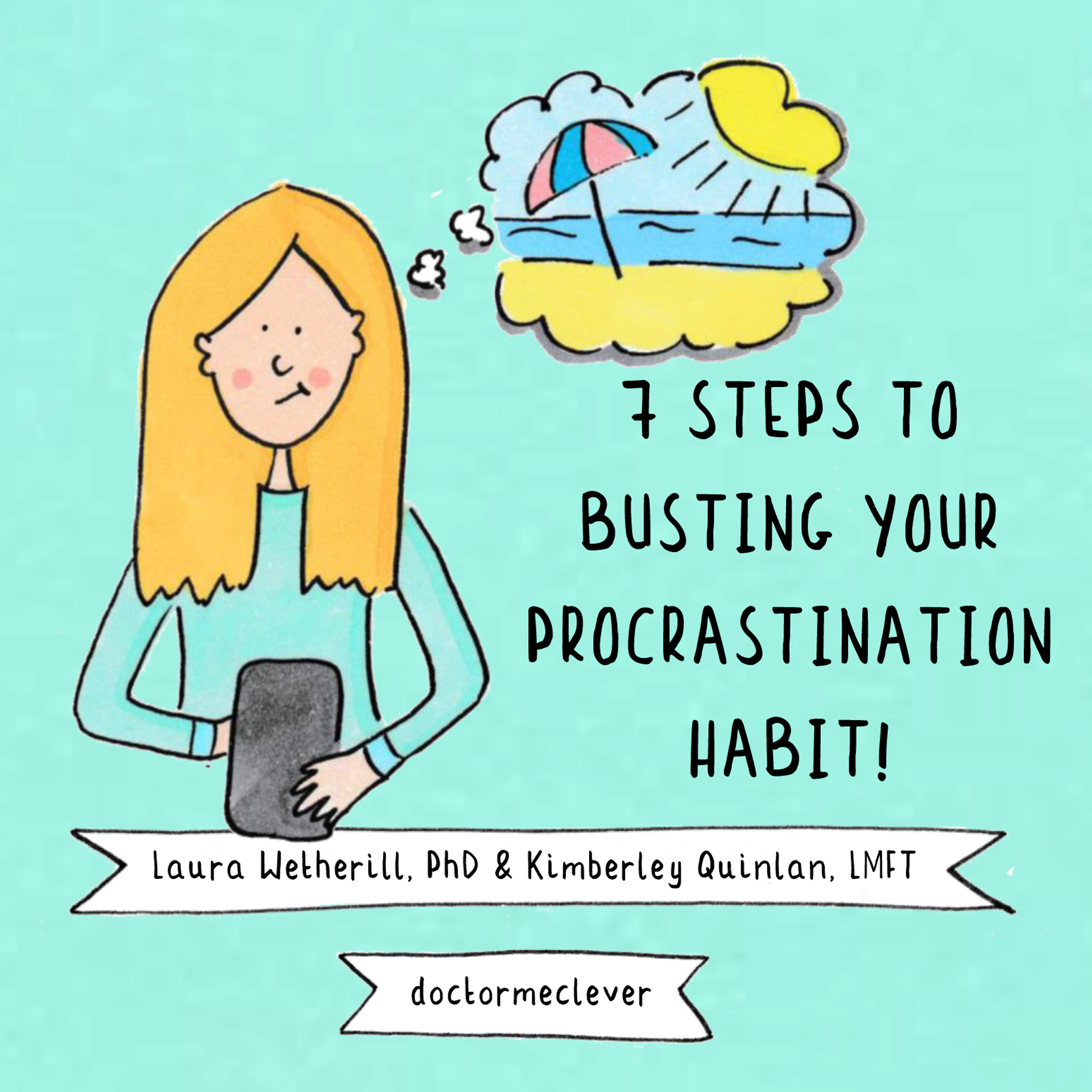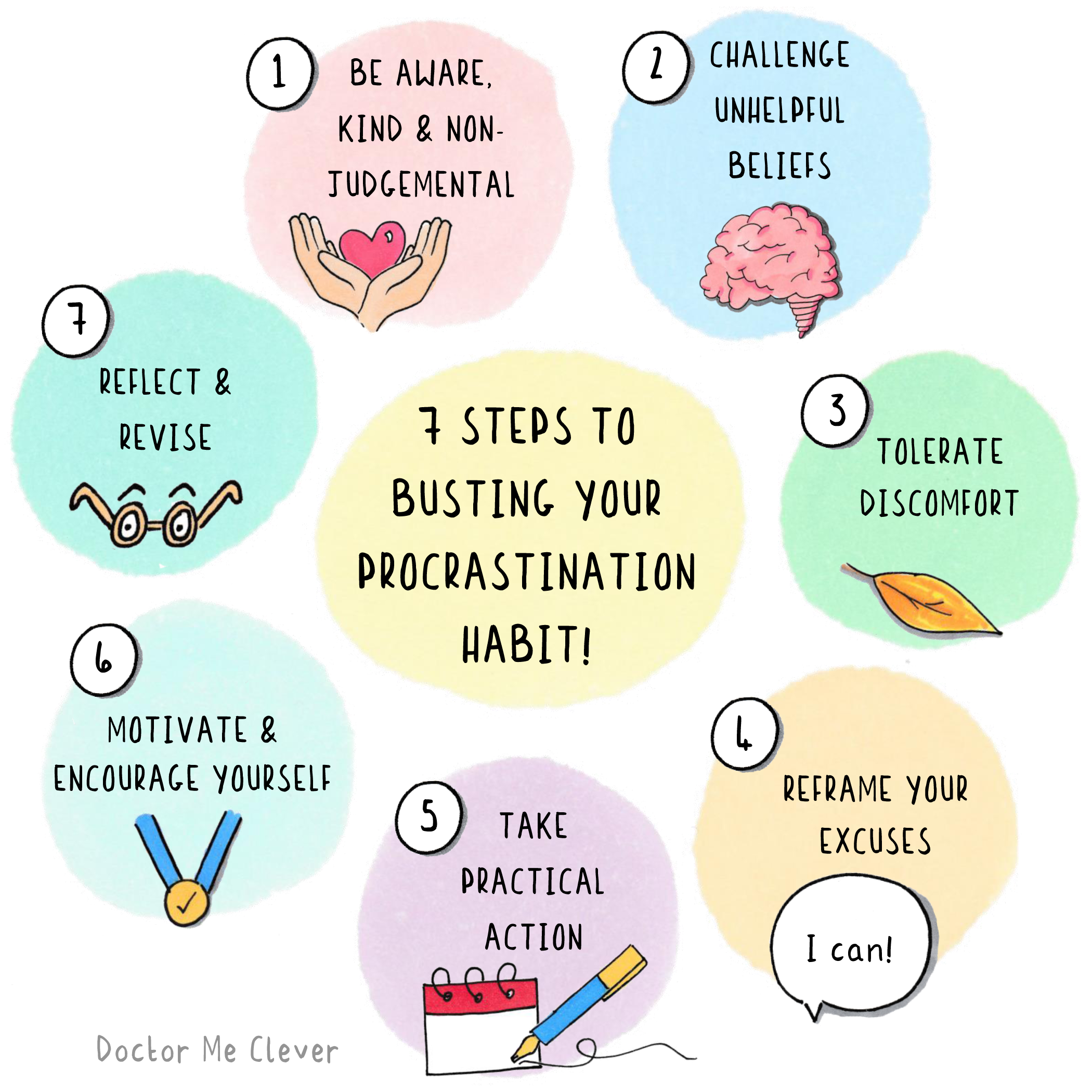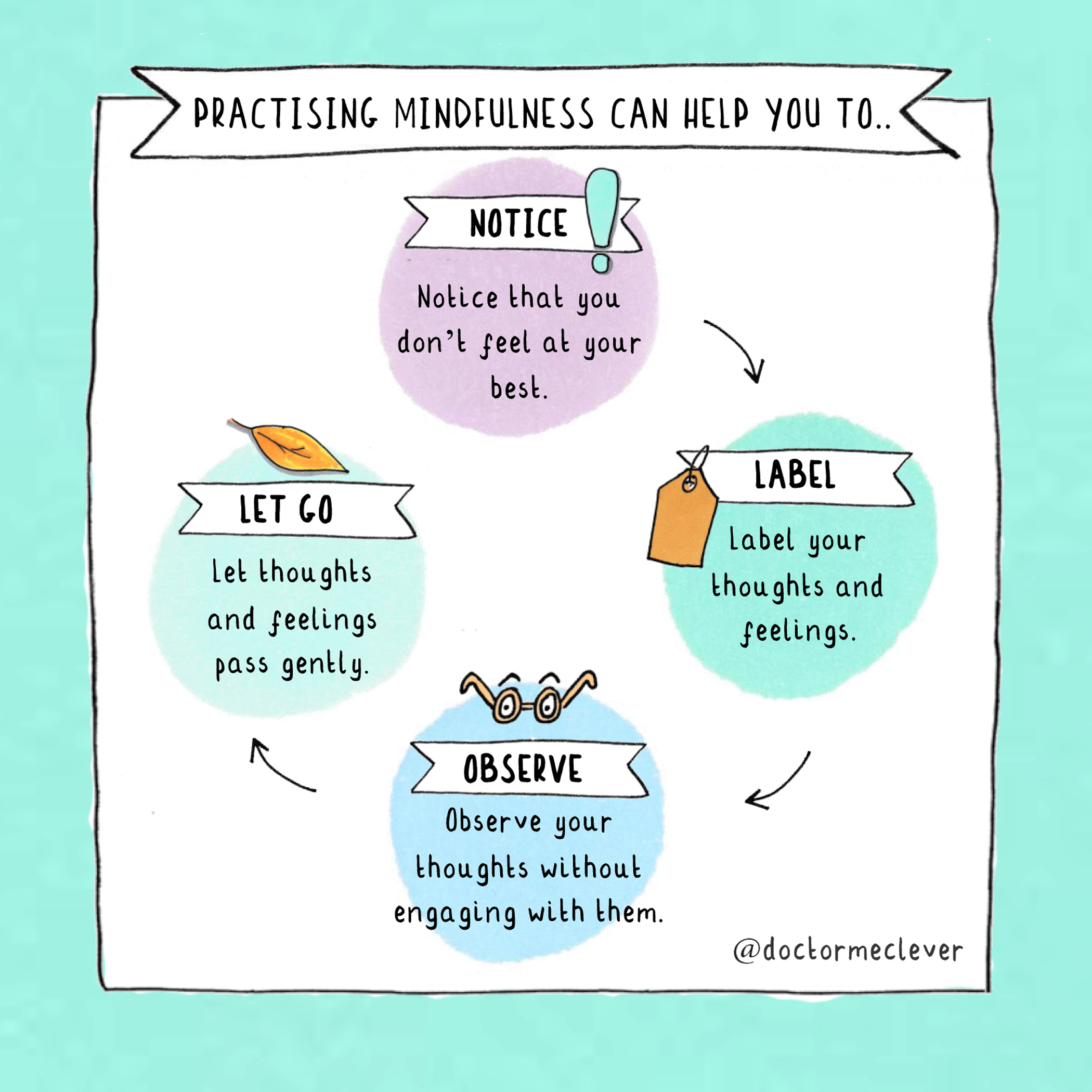You know the deal.
There’s a task…
A piece of homework due in for tomorrow morning. You really don’t want to do it, but you can’t quite put your finger on why? You’d rather tidy your room and you’ve already switched the TV on. You’re procrastinating, stuck in the gap between your intention to do the work and the action that you need to do to get it started. You feel stuck, and you can’t see a way through the mental brick wall that stands tall between you and the start line. There seems to be some invisible force holding you back.
You do anything and everything to distract yourself from the discomfort you feel towards even attempting to look at the work. The TV gives you some relief and you justify your decision to delay the task by telling yourself that you’ll only watch it for one hour, there’s plenty of time and that you work better under pressure. Sound familiar?
The hour passes but, I know shocker, you still don’t want to do the homework. The discomfort has snowballed because you now have less time to complete it, better get started right?
Hmmm… don’t be silly.
The thought of it is still too overwhelming, you turn to your phone to message your best friend, explain how terribly awful and unfair it is that you have this assignment and feel worse when they tell you that they finished it last week.
It’s getting late, everyone has gone to bed and you can’t leave it any longer. You’re tired but too scared to get a big fat zero, so you figure less than 100% will have to do, you now have no choice. You climb into bed and finally get started. You finish in the early hours and your lack of sleep means that you’re irritable and unable to concentrate the next day. Then you start with the self-criticism. You beat yourself up and the shame and guilt set in. “Why didn’t I start it sooner? I had so much time, what is my problem? I’m so lazy and useless.”
You get through the day, but you seem to have learnt nothing as the cycle starts again, a piece of homework that you were given last week is due tomorrow but guess what? Love Island is on and the night is yet young…. and so, it continues…
———
I was this student. Academically capable of doing the work but held back by a mind that was plagued with so many unhelpful beliefs. Starting every piece of work felt like a mammoth task. I seemed to be stood at the bottom of a mountain, looking up, wishing I could get to the top, whilst something kept me rooted to the ground at the bottom. I always found myself in a procrastination cycle and I was exhausted. Back then, I had zero clue that my fear of failure/disapproval, fear of uncertainty, low self-confidence and lack of energy were fuelling problematic procrastination and stopping me from taking the first steps towards gaining the momentum needed to get me to the top of what was actually a relatively small hill!
My inability to tolerate the discomfort that I felt when I needed to do something that I didn’t feel capable of doing well, led me to seek comfort in procrastination activities such as watching the TV and talking with friends on social media. The consequences were nearly always negative. The longer that I engaged in these procrastination activities, the less attractive the homework became and getting started got harder and harder, until I felt I had no choice but do the work, tired, miserable and under pressure!
I look back to my teenage years and see how much procrastination affected my studies and later my career. Had I known back then what I know now, maybe my mood wouldn’t have been so low and I wouldn’t have been so exhausted all the time.
———
I was 29 years old when a psychological therapist recognised that I had a procrastination problem and handed me a set of factsheets that explained why people procrastinate and what can be done about it. I was fascinated and began to educate myself on the subject as best I could.
I can’t turn back time and give this information to 15-year-old me, but I decided that I could put together a fun and free procrastination buster pack to help today’s students that find themselves feeling as I did back then.
To ensure that the information that I give to you is accurate and relevant. I have teamed up with licensed marriage and family therapist (LMFT) Kimberley Quinlan of CBTschool to bring you a pack full of useful activities to help you understand and then bust your procrastination habit for good.
So let’s get started! Here are our 7 steps to help you stop procrastinating and start doing.
———
STEP 1: BE AWARE, KIND & NON-JUDGEMENTAL
The first step sounds simple but is so important. Start by promising yourself that you will learn to become aware of the urge to procrastinate, to be your own best friend and refrain from beating yourself up when procrastination strikes. Acknowledge that the urge to procrastinate is well and truly here, take a deep breath, make some space for it, maybe even welcome it and then make the CHOICE to do things differently this time.
I wish I could wave a magic wand and give you a quick and easy fix, but self-development takes patience, practise, compassion and time. Give yourself permission to make mistakes and gently move towards becoming a doer.
STEP 2: CHALLENGE UNHELPFUL BELIEFS
Procrastination strikes when we hold unhelpful beliefs about ourselves, others and the world around us. These unhelpful beliefs fuel the discomfort we feel when faced with a seemingly daunting task (e.g. a piece of homework, revision or doing the laundry!). Identifying and challenging your beliefs/thoughts can help you to understand why you procrastinate.
Do you like to be in charge? Do you hold the unhelpful belief that you shouldn’t have to do things that others (teachers/parents) tell you to do? Or, are you so scared of failure that you hold the unhelpful belief that the work isn’t worth doing unless it can be done perfectly?
Our pack explores some common unhelpful beliefs and invites you to identify and challenge your own. You can explore why you think your unhelpful beliefs are true. Challenge them by stating why they are unrealistic/unfair, rewrite them so that they become helpful and decide how you can practise them in everyday life.
It isn’t always necessary to nail changing your beliefs to overcome the habit of procrastination. I personally find this to be the hardest step because it means changing/challenging beliefs that you may have held for a very long time. You can overcome procrastination without permanently changing these beliefs but recognising them as unhelpful is key.
STEP 3: TOLERATE DISCOMFORT
When you’re faced with doing something you reeeeally don’t want to do, it’s uncomfortable. This discomfort might mean you feel: worried, bored, angry, frustrated (this list goes oooonnn…). The procrastination buster pack will help you to explore what discomfort might feel like to you, so that you can become aware of it and use techniques to tolerate it better.
When you can’t stand feelings of discomfort and you can’t tolerate them, you’re more likely to seek comfort in procrastination activities. When doing these fun activities, you’re not making progress or completing the task at hand. You may get short-term relief from the discomfort but the longer you put off the task the more averse you become to starting it. Learning to tolerate discomfort makes you less likely to fall into the procrastination trap and takes you a step closer to getting the important stuff done!
Practising mindfulness can help you learn to tolerate discomfort. Simple but powerful techniques such as being aware of your breath, body and surroundings (sights, tastes, sounds, smells, sensations) can help you notice feelings of discomfort. Once you are aware you can learn to become an observer, labelling and watching your thoughts and feelings come and go rather than engaging with them and becoming upset or frustrated by them. Mindfulness can also help you learn to let go, to stop battling thoughts, helping you to ride the wave of discomfort as it rises and falls.
If you’re interested in learning more about mindfulness we can recommend the following resources:
Book: Mindfulness: A practical guide to finding peace in a frantic world by Mark Williams and Dr Danny Penman. *
Apps: Headspace (10 free meditations but I pay for (and love) the annual subscription), Insight timer (free) and Calm (free trial).
STEP 4: REFRAME YOUR EXCUSES
Excuses, excuses, excuses. Procrastinators make excuses and draw unhelpful conclusions from them. Doers may make excuses but counter them with helpful conclusions. Your conclusions make all the difference!
“I’ve got plenty of time, why start now?”
“I’m too tired, I better rest first.”
“I really need to organise my entire desk, including that drawer that I haven’t looked in for over a year, before I start any work.”
Can you relate? If you don’t want to start a piece of work, guaranteed your mind will feed you a fantastically convincing (sometimes elaborate) excuse to get you off the hook, justifying your decision to delay the task.
What’s interesting is that most of your excuses will have some truth to them. You may well be tired, you may well have plenty of time and your desk may well be a bit of a state. However, procrastinators draw unhelpful conclusions from their excuses, whilst doers choose to reframe their excuses and draw helpful conclusions from them.
“I’ve got plenty of time, but it’s better to start now than leave it until last minute.”
“I’m too tired, but I could do something small to start now.”
“I really need to organise my entire desk, but it’s not my priority right now and I can make time to do it later.”
The procrastination buster pack will help you to identify your own excuses and reframe them, so that you have an alternative conclusion the next time that excuse crops up again!
STEP 5: IMPLEMENT PRACTICAL STRATEGIES
It’s now time to take some practical action, to decide WHAT needs to be done and WHEN it can be done.
WHAT? Write a list of tasks, prioritise them and then break each task down into realistic, manageable goals. If you like to use pen and paper to record your to-do lists, you’ll find the templates in our pack helpful. Alternatively, if you like electronic to-do lists, the free list-making app Trello is useful.
WHEN? Use a calendar of your choice to schedule when you can make a start on each manageable goal. Apps such as iCal or Google calendar are great for this.
Once you’ve decided what and when. Take a little time to remove distractions from your work space and optimise your environment. Maybe you always find yourself breaking away from your work early because you need a drink and snack. It might help to get those things ready before you start.
STEP 6. MOTIVATE & ENCOURAGE YOURSELF
Pause for a moment and check in with yourself to make sure that you’re encouraging yourself and not being too self-critical of your thoughts, actions and emotions. Talk to yourself as though you’re a motivating and encouraging friend.
There are many techniques that you can use to help motivate you to get started with the task. You could use visualisation, rewards and/or focus apps such as Forest or Flora. Our pack suggests several simple techniques that you can try. Some people like to “eat the frog” and get the hardest task out of the way first, others prefer to start with easier tasks and gain momentum from them. It may take some trial and error to work out what works best for you.
STEP 7: REFLECT & REVISE
Finally, look back and reflect on steps 1-6. What worked, what didn’t and what you could try next time? What positive consequences have you noticed? The pack provides some journaling questions that will help you to notice where you might be stumbling and what is really working for you.
———
Thank you so much for investing this time in yourself, we hope that you enjoy busting your procrastination habit.
Kimberley and I wish you the very best of luck.
———
* As an Amazon Associate I earn from qualifying purchases.




